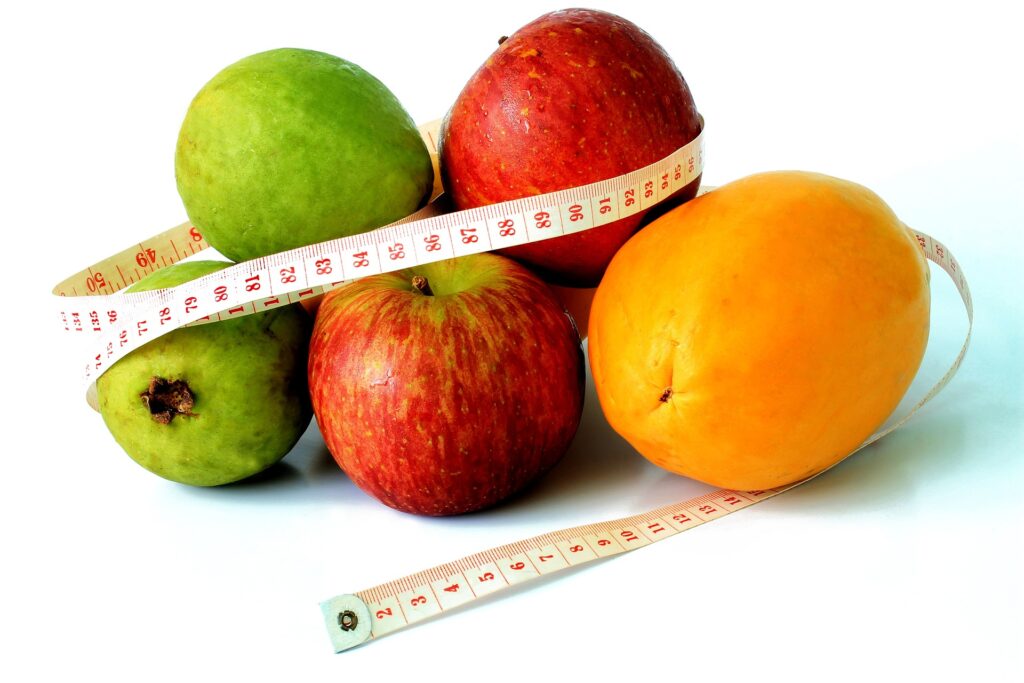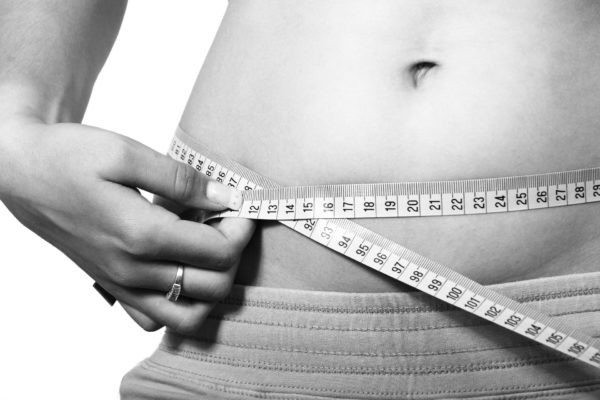Transform Your Body by Shedding 50 Pounds in Just 6 Months

Obesity and overweight rates continue to be major public health concerns globally.
According to the World Health Organization (WHO), worldwide obesity rates have nearly tripled since 1975, with an estimated 39% of adults being overweight and 13% being obese.
In addition, childhood obesity is also on the rise, with an estimated 340 million children and adolescents aged 5-19 being overweight or obese in the last few years back.
Many countries have implemented initiatives and policies to address the obesity epidemic, such as promoting healthy diets and physical activity, implementing taxes on unhealthy foods, and creating supportive environments for healthy behaviours. (1)
Overall, weight loss remains an important topic of concern for individuals, healthcare providers, and policymakers worldwide, and efforts to prevent and treat obesity are ongoing.
Losing 50 Pounds in 6 Months
Losing 50 pounds in 6 months is a significant amount of weight to lose and may not be achievable or safe for everyone.
The amount of weight you can lose in 6 months depends on several factors, including your starting weight, age, sex, metabolism, and level of physical activity.
A safe and sustainable rate of weight loss is generally 1-2 pounds per week. Therefore, losing 50 pounds in 6 months would require a weight loss rate of approximately 2-3 pounds per week, which may be challenging for some people.
To lose weight, you need to create a calorie deficit by burning more calories than you consume.
A calorie deficit of 500-1000 calories per day can lead to a weight loss of 1-2 pounds per week.
Therefore, to lose 50 pounds in 6 months, you would need to create a daily calorie deficit of 833-1667 calories.
To lose 50 pounds in 6 months, you would need to lose approximately 8 pounds per month or 2 pounds per week.
This rate of weight loss is achievable for some people, but it may not be realistic or safe for everyone.
The best way to approach weight loss is to make gradual and sustainable changes to your diet and exercise habits.
Focus on creating a calorie deficit through a combination of diet and exercise, and aim to consume a healthy and balanced diet that is high in protein, fiber, and healthy fats.
Is it Safe or Not?
Losing 50 pounds in 6 months is a significant amount of weight to lose in a short period, and it’s important to approach weight loss safely and sustainably.
Whether or not it is safe to lose pounds in months or weeks, depends on a variety of factors, including your starting weight, overall health, and approach to weight loss.
In general, a safe and sustainable rate of weight loss is 1-2 pounds per week. Losing weight too quickly can be harmful to your health and may lead to a loss of muscle mass instead of fat.
Rapid weight loss can also increase the risk of gallstones, dehydration, and nutrient deficiencies.
To lose 50 pounds in 6 months, you would need to create a calorie deficit of approximately 1000 calories per day.
This can be achieved through a combination of diet and exercise strategies, but it’s important to do so in a way that is safe and sustainable for your individual needs. (2)
Focus on consuming a healthy and balanced diet that is high in protein, fiber, and healthy fats, and engage in regular physical activity that you enjoy.
It’s important to prioritize your health and well-being throughout the weight loss journey and to avoid quick-fix or fad diets that promise rapid weight loss.
Best Ways to Lose 50 Pounds in 6 Months
(26 Weeks)
Losing 50 pounds in 6 months is a noteworthy goal. Here are some effective strategies to help you achieve this goal:
Create a Calorie Deficit
To lose weight, you need to create a calorie deficit by burning more calories than you consume.
This can be achieved through a combination of reducing your calorie intake and increasing your physical activity.

A calorie deficit of 500-1000 calories per day is recommended for a safe and sustainable weight loss of 1-2 pounds per week.
It is essential to maintain a balanced and nutritious diet while reducing calorie intake to avoid nutrient deficiencies.
Incorporating strength training exercises can also help to preserve muscle mass while losing weight.
A consistent and gradual approach to calorie deficit over 6 months, combined with healthy habits and a positive mindset, can help you achieve your weight loss goal.
Follow a Healthy and Balanced Diet
Following a healthy and balanced diet can help you lose 50 pounds in 6 months by ensuring that your body receives all the necessary nutrients while consuming fewer calories.
A balanced diet includes a variety of whole foods such as fruits, vegetables, whole grains, lean proteins, and healthy fats while limiting processed and high-calorie foods.
This helps to provide essential nutrients while maintaining a calorie deficit for weight loss. In addition, a balanced diet can help to control cravings and hunger, which can lead to overeating and weight gain.
Consuming high-fiber foods such as vegetables and fruits can increase satiety and reduce the likelihood of overeating.
It is also important to eat at regular intervals to maintain stable blood sugar levels and avoid unhealthy snacking (3).
Finally, following a balanced diet can help to establish healthy eating habits that can be sustained over the long term. This can help to prevent weight regain after losing 50 pounds.
Engage in Regular Physical Activity
Try to have a minimum of 150 minutes of cardiovascular exercise per week (moderate intensity), such as brisk walking, cycling, or swimming. This can help you burn calories and improve overall fitness.
Physical activity can help you lose 50 pounds in 6 months by increasing your calorie expenditure and improving your overall health.
Engaging in regular exercise can help to burn additional calories and create a greater calorie deficit, which is essential for weight loss.
To begin, it is suggested to get a minimum of 150 minutes of aerobic exercise (moderate-intensity) or 75 minutes of aerobic exercise (high-intensity) per week.
This can be achieved through activities such as brisk walking, jogging, cycling, or swimming.
Incorporating strength training exercises two to three times per week can also help to build muscle mass, which can increase calorie burn and preserve muscle during weight loss.
It is important to gradually increase the duration and intensity of exercise over time to avoid injury and improve fitness levels.
Starting with low-impact activities such as walking and gradually progressing to higher-intensity activities can help to build endurance and prevent burnout.
Additionally, finding an activity that you enjoy can help to increase motivation and adherence to the exercise program.
Monitor Your Progress
Regularly weigh yourself and track your progress using a food diary or mobile app. This can help you stay accountable and make adjustments to your diet and exercise habits as needed.
Monitoring your daily progress can help you lose 50 pounds by providing insight into your diet, physical activity, and overall health habits. This can help to identify areas for improvement and track progress towards weight loss goals.
There are several ways to monitor progress, including tracking daily calorie intake and physical activity using a food diary or fitness app.
This can help to identify patterns in eating and exercise behaviours and adjust as necessary.
Setting daily or weekly goals for calorie intake and physical activity can also help to stay motivated and focused on weight loss.

Additionally, monitoring weight loss progress through regular weigh-ins can help to track progress and adjust the diet or exercise program as needed.
However, it is important to remember that weight loss is not always linear and can fluctuate over time, so it is important to focus on overall progress rather than short-term fluctuations.
Manage Stress
Managing stress can help you lose 50 pounds in 6 months by reducing the likelihood of overeating or engaging in other unhealthy behaviours that can lead to weight gain.
Chronic stress can lead to the release of cortisol, a hormone that can increase appetite and promote fat storage.
Additionally, stress can lead to emotional eating, where individuals eat to cope with negative emotions, which can contribute to weight gain over time.
To manage stress, it is important to identify sources of stress and develop strategies to cope with them.
This can include practising relaxation techniques such as meditation or deep breathing, engaging in physical activity, or seeking support from friends and family.
Getting adequate sleep and engaging in self-care activities such as reading or taking a bath can also help to reduce stress levels. (4)
In addition to stress management techniques, practising mindful eating can also help to reduce the likelihood of overeating.
This involves paying attention to hunger and fullness cues, eating slowly and savouring food, and avoiding distractions such as television or smartphones while eating.



